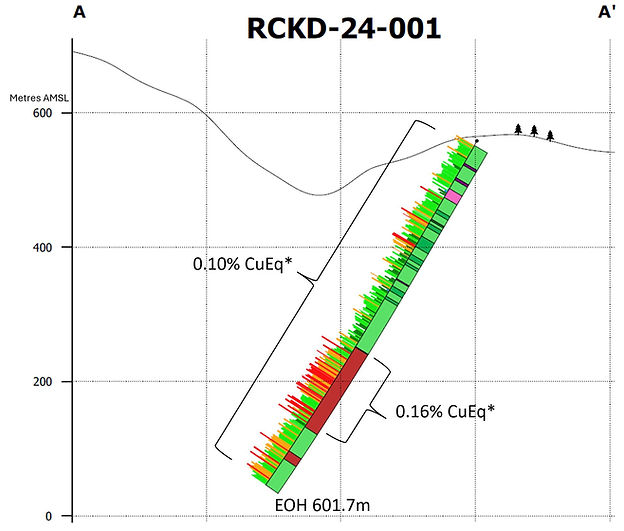


Company recently discovered large scale copper porphyry system
2025 drill program testing most advanced target at Kendal Ridge. Bulk of 4 km by 3 km system untested.
Excellent infrastructure offers significant advantages to improve margin potential

Kendal project interpreted footprint of hydrothermal system is defined by an extensive zone of relative high conductivity (resistivity low).
All drill holes intersected significant porphyry-style alteration, multiple vein sets and variable visual copper and molybdenum (moly) mineralization throughout.
Drill vectoring studies suggest Kendal system is open to depth and laterally.

The strongest portion of the resistivity high geophysical feature identified on the Moly Fork trend remains untested.
Area immediately east of Kendal Ridge hosts breccias with copper/moly mineralization and high-grade hypogene chalcocite veining with select grades of up to 27.5% copper.

Areas with high resistivity and subdued magnetic responses within the Kendal Ridge zone appear closely associated with altered porphyry intrusions, hosting multiple generations of complex porphyry-style veins and variable alteration.

RCKD-25-006 NQ drill hole showing an altered porphyry intrusion and associated B-style veins.



RCKD-24-001 at Kendal returned 0.10% CuEq* starting from surface to 601.7 m, including 123.0 m grading 0.16% CuEq*








